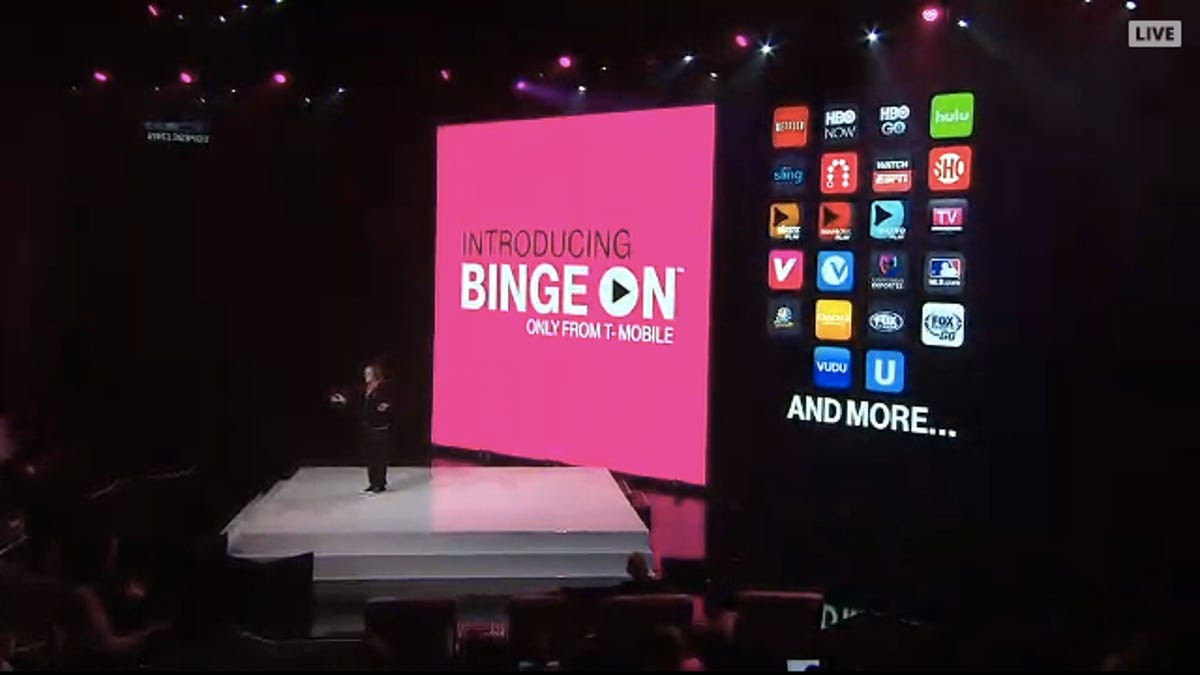YouTube tunes into T-Mobile's Binge On at last
The massive video site is the headliner among nine video services that will work with T-Mobile's program, which lowers the quality of video in exchange for unlimited viewing.

T-Mobile and YouTube have made up.
Early on, the world's largest video site had expressed its displeasure at T-Mobile's Binge On program, which compresses video, at some cost to quality, to allow subscribers to watch unlimited content on their phones and tablets. YouTube wasn't part of the program, yet still saw its video quality get dinged.
"Reducing data charges can be good for users, but it doesn't justify throttling all video services, especially without explicit user consent," a YouTube spokesman told The Wall Street Journal (paywall) in January.
But that's water under the bridge now that T-Mobile has tweaked the program. YouTube and eight other video services have joined Binge On, the Bellevue, Washington, carrier said Thursday. The other partners are Baeble Music, Discovery Go, ESNE TV, FilmOn.TV, Fox Business, Google Play Movies, KlowdTV and Red Bull TV. That brings the total to 52.
T-Mobile CEO John Legere has made up with Google and YouTube.
The addition of YouTube fills the biggest gap in Binge On's lineup. While the program launched in November with heavy hitters such as Netflix and ESPN, many of the online eyeballs are still directed to Google's massive video service. The move comes as you and everyone else increasingly spend time watching videos on your phone or tablet, which eats up most of your data allotment. T-Mobile says customers are watching twice as many hours of video a day with its program.
Binge On works by compressing the video data traveling to your phone so it's less of a burden on the network. The result is that high-definition video gets reduced to something more like DVD quality, which T-Mobile argues is sufficient on a small screen.
T-Mobile on Thursday also made it easier for customers to opt out of the program (you can text or use the app) and to let video providers choose when their video gets compressed or not, which was enough to get YouTube and Google Play onboard.
Customers with a midtier plan or above are able to watch video on these participating services without it affecting their data allotment. People on the cheapest plan benefit from the compressed video data, but still face limits.
YouTube wasn't alone in its criticism of T-Mobile. The watchdog group Electronic Frontier Foundation also accused T-Mobile of throttling, or intentionally slowing down the connection of video services. The Federal Communications Commission is also looking at whether the video service violates the principles of Net neutrality by playing favorites with selected partners.
T-Mobile CEO John Legere defended the program, arguing that customers benefit from the unlimited video offering. He argued that Binge On was also compliant with Net neutrality because any video provider could sign on.

